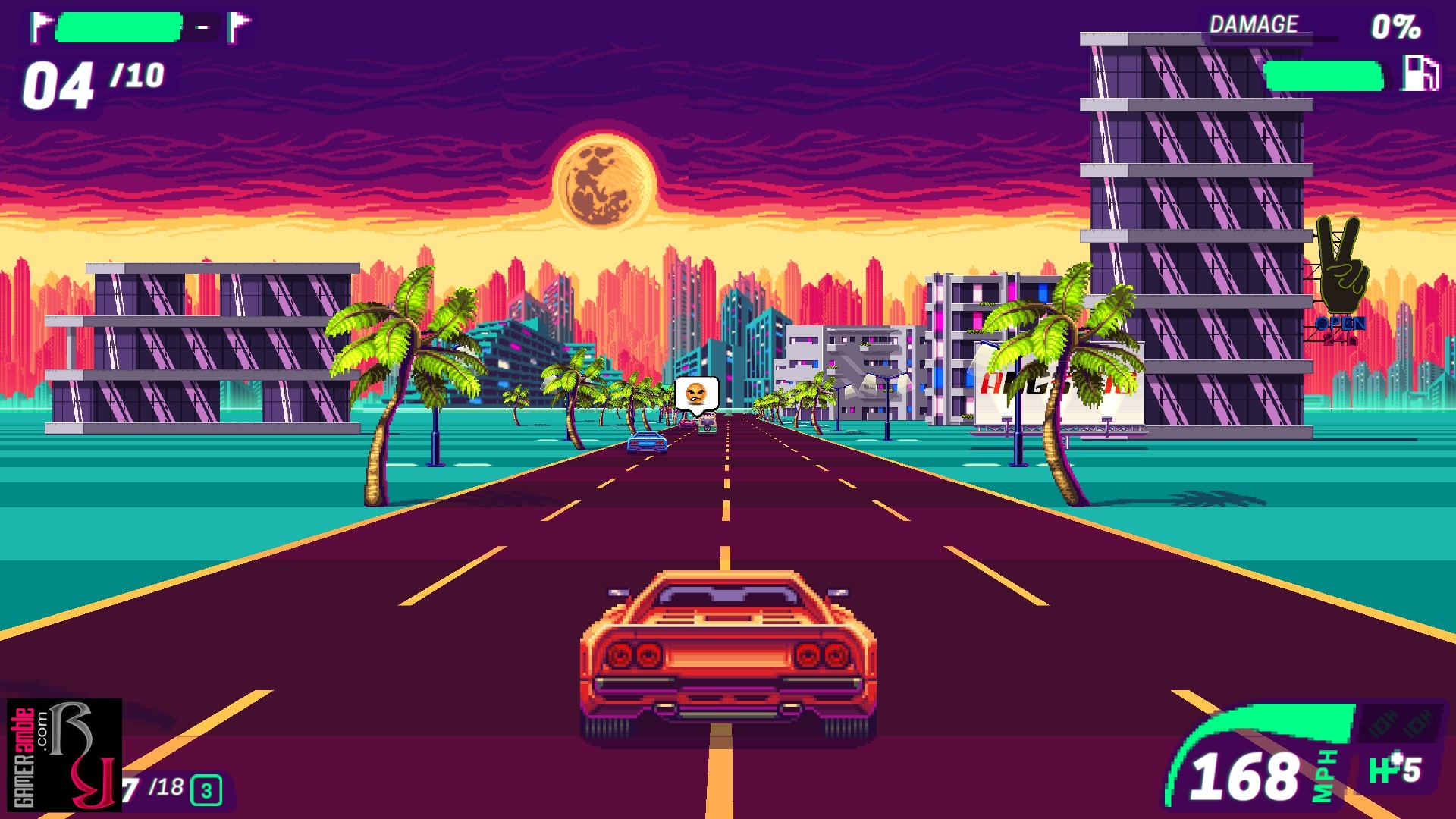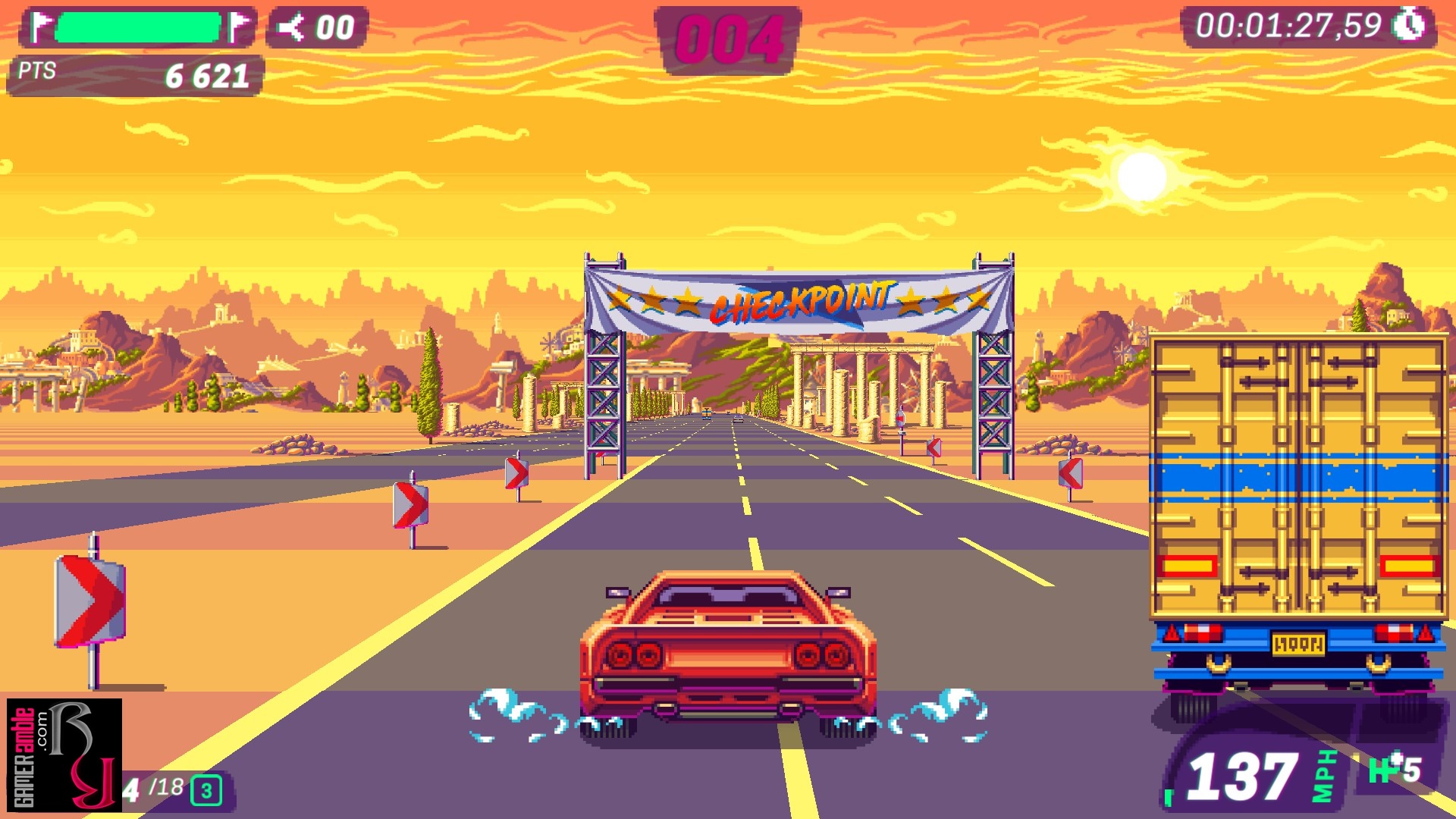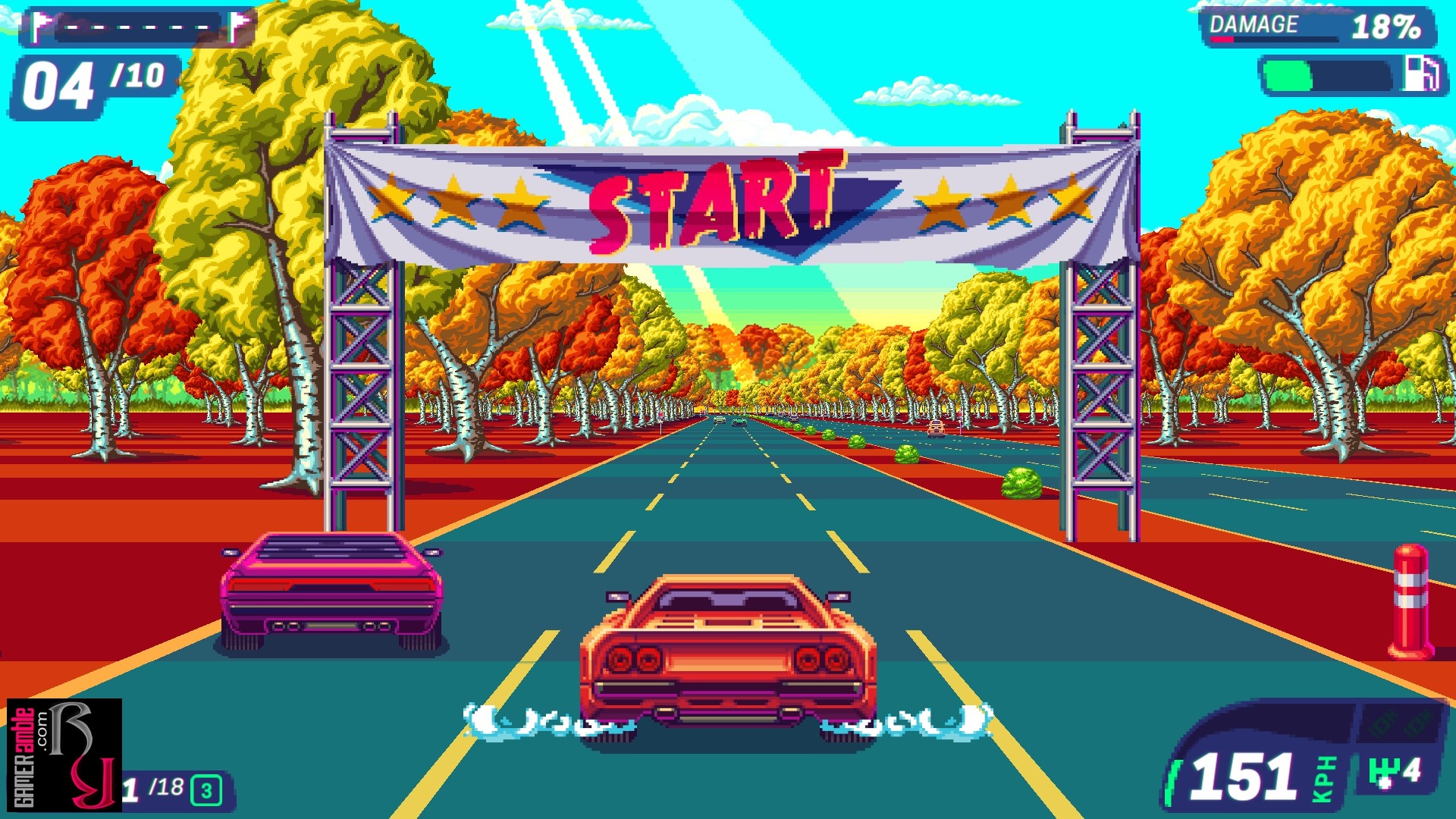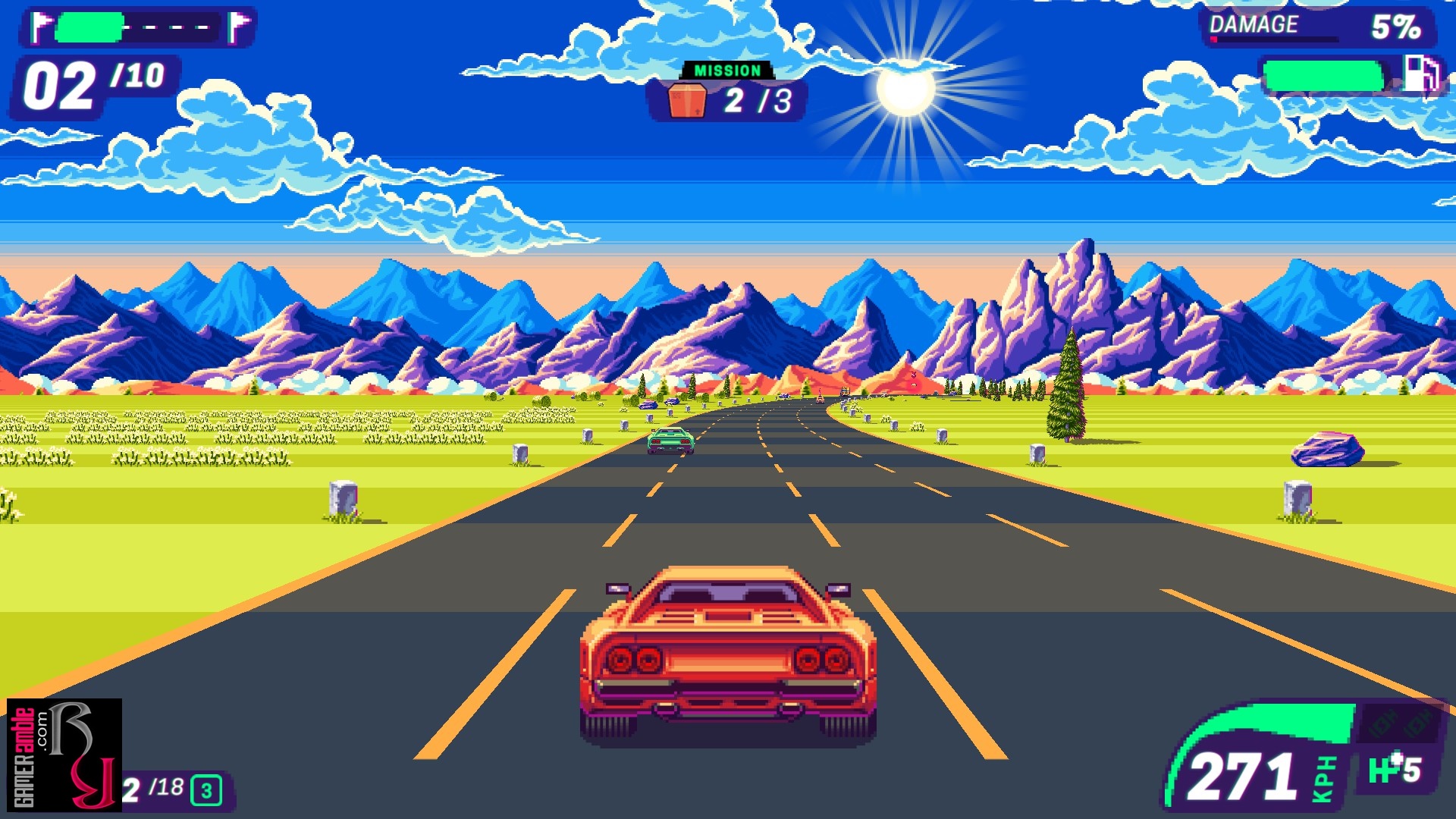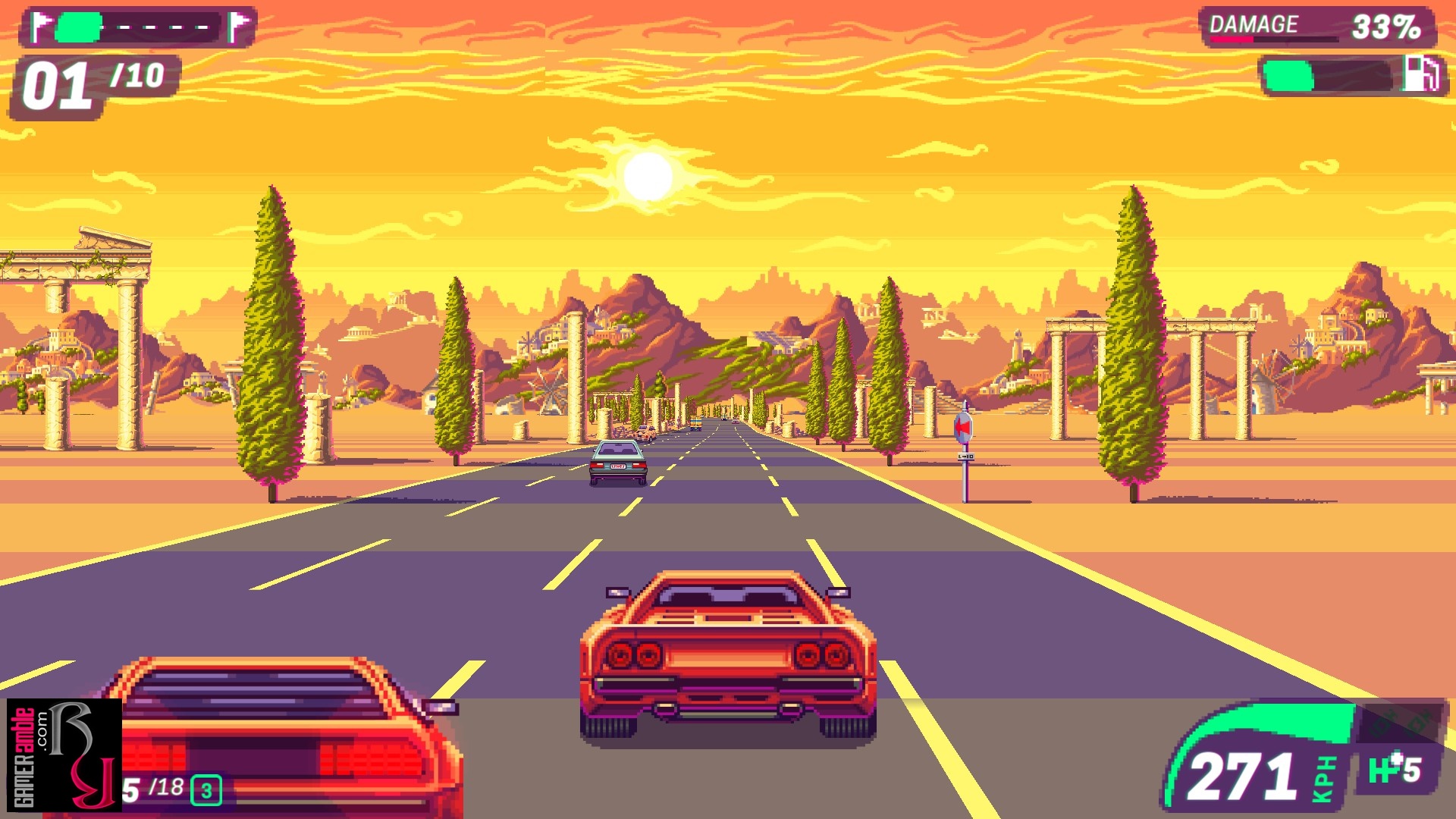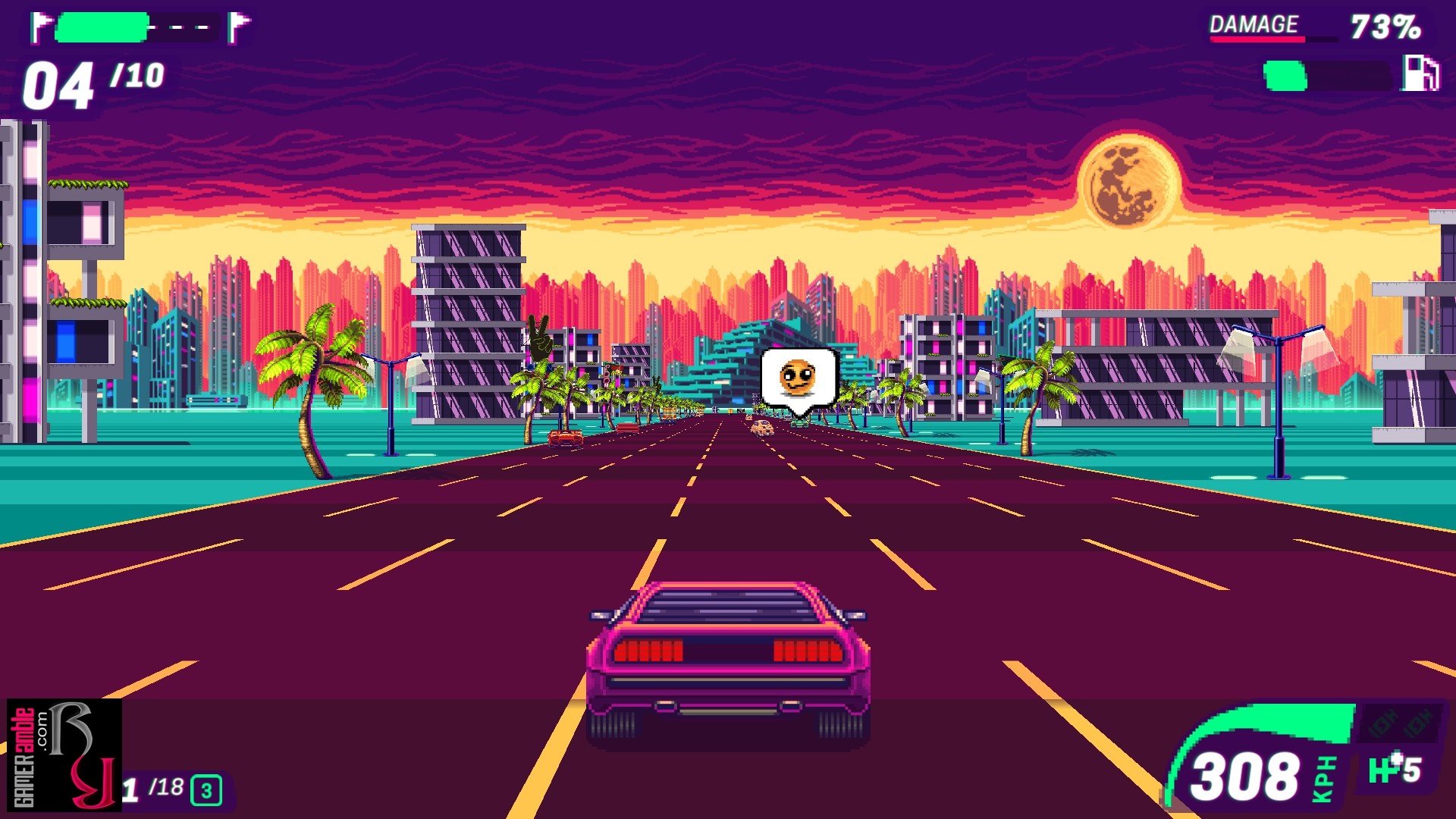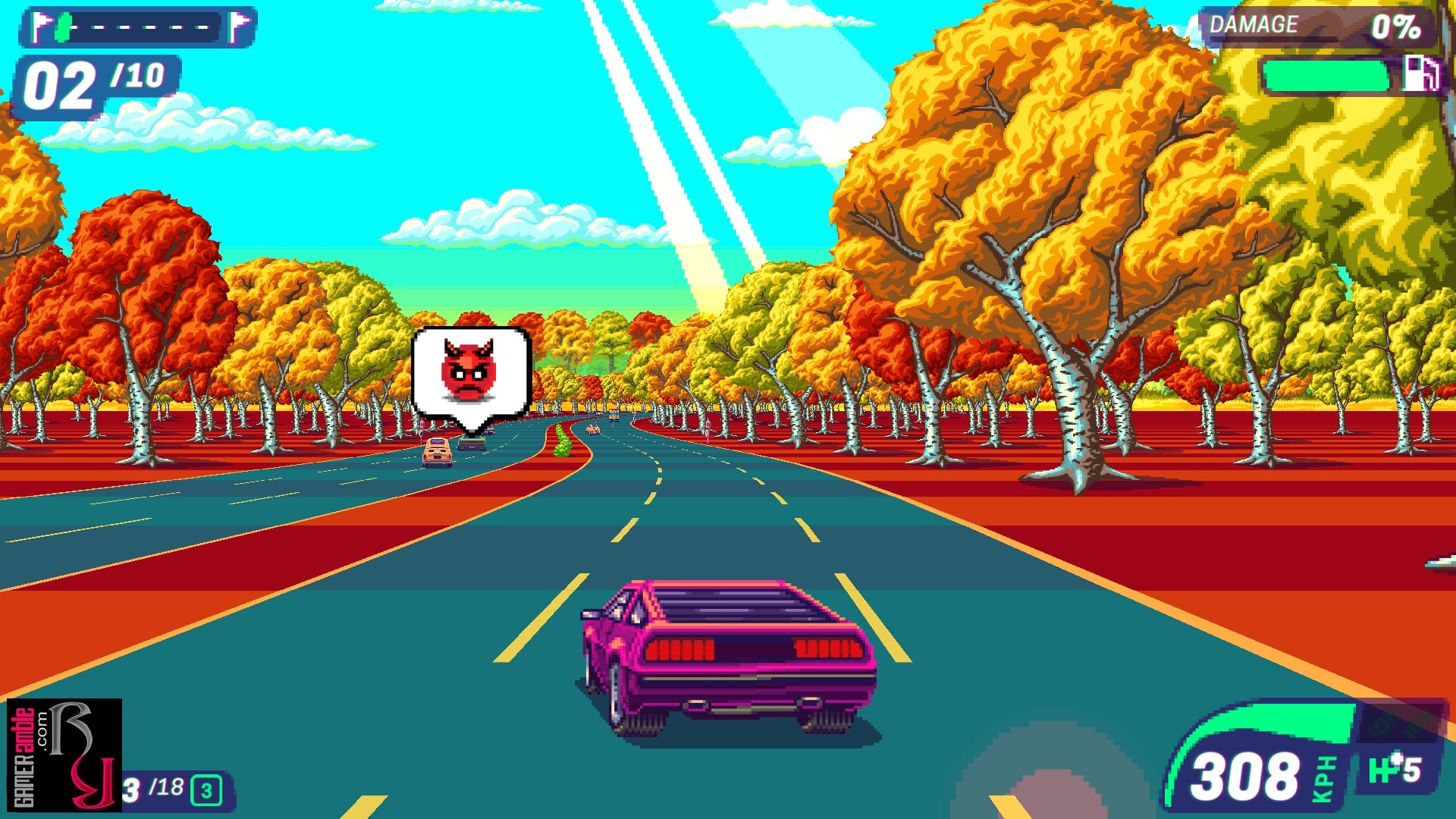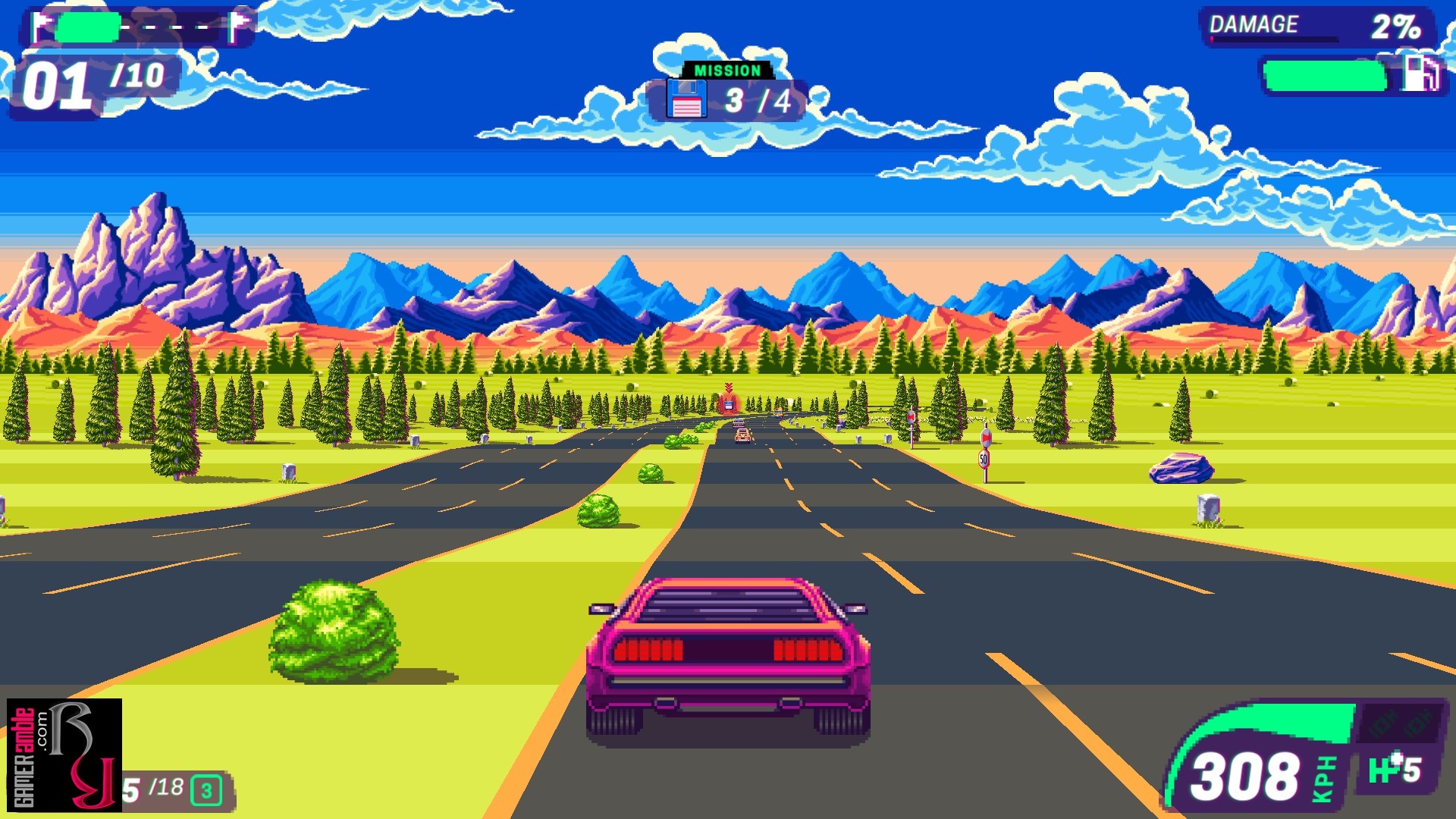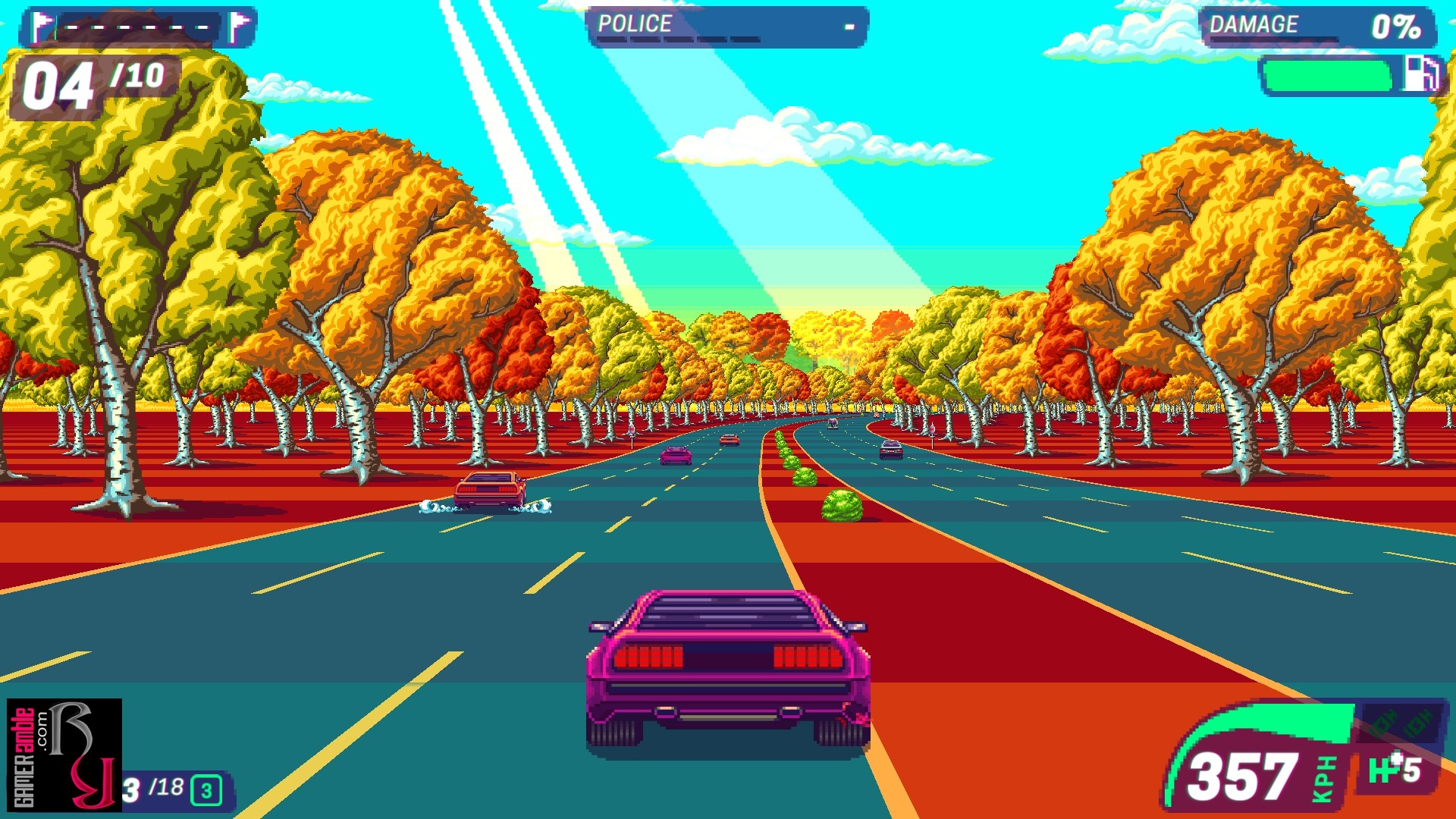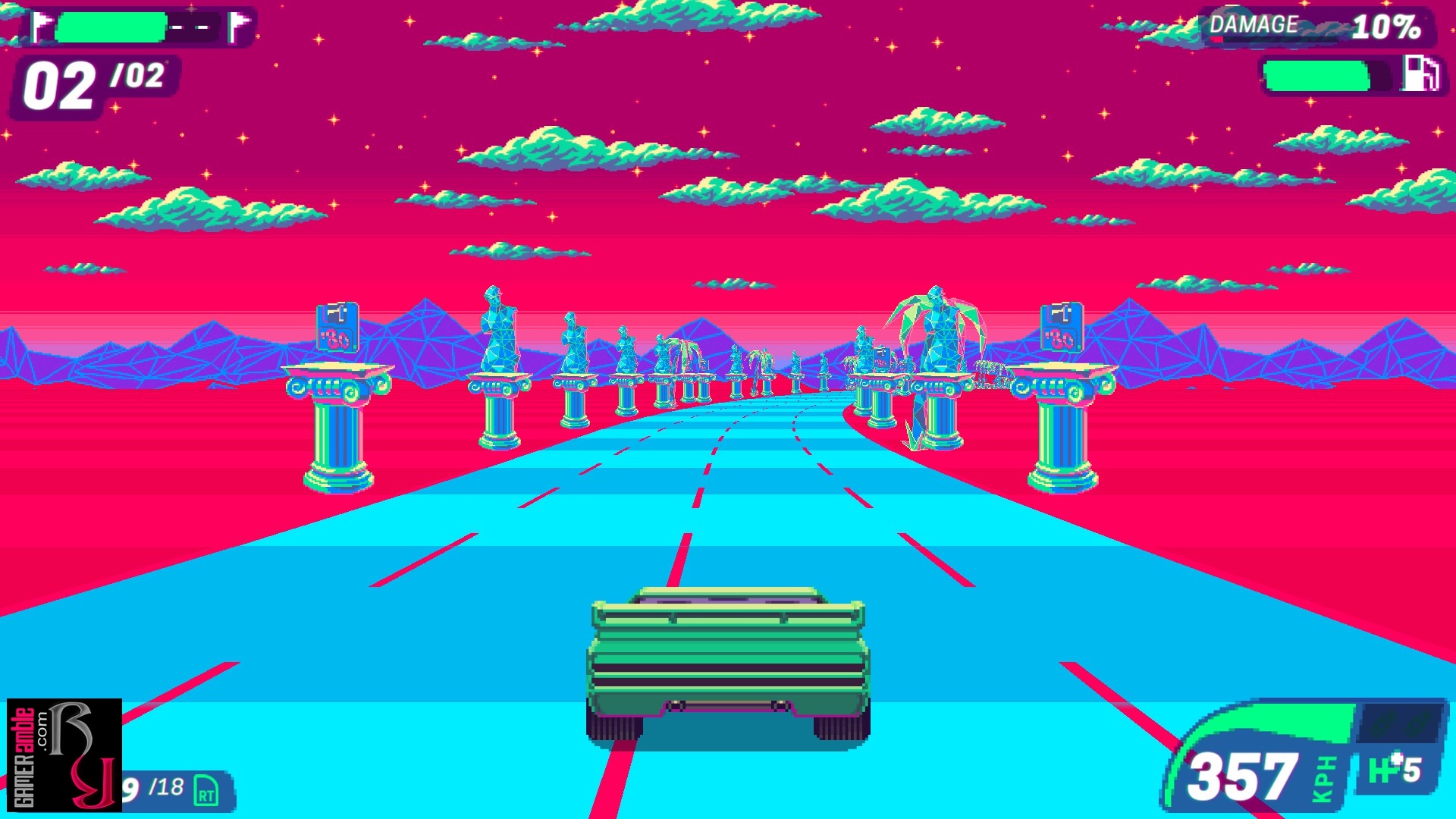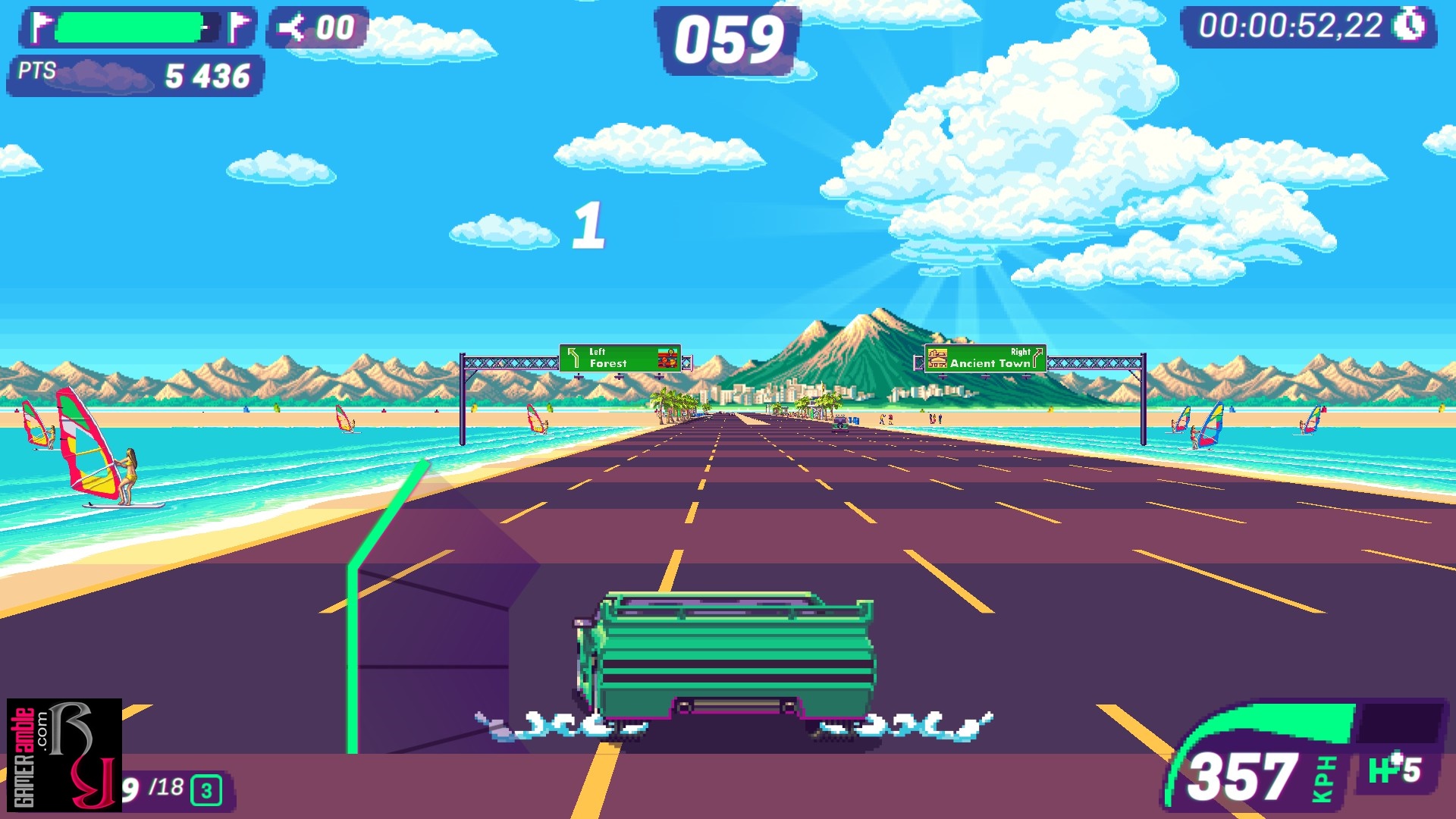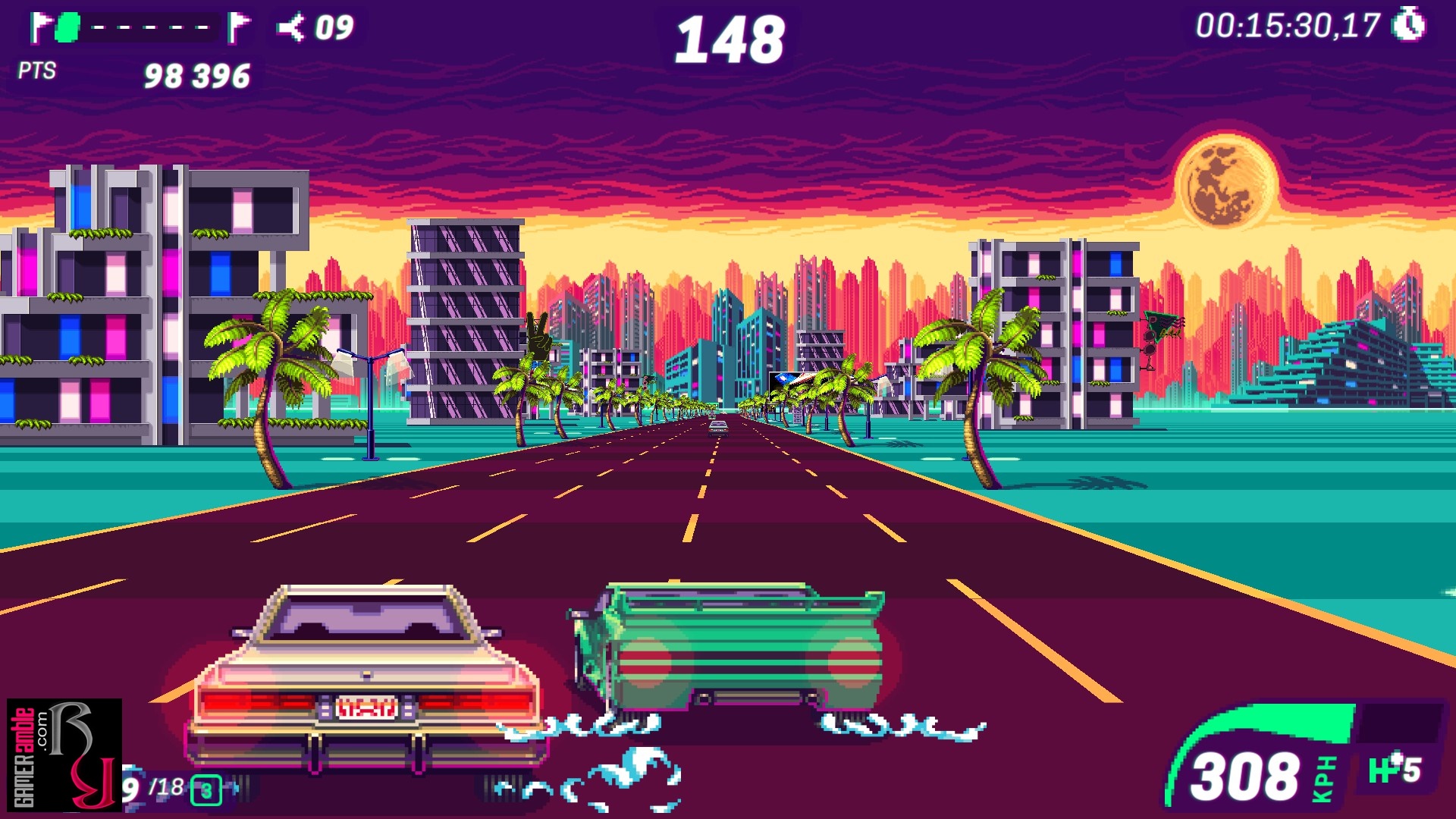80’s OVERDRIVE
Developer: Insane Code | Publisher: Insane Code | Release Date: 2020 | Genre: Racing / Arcade / Indie | Website: Official Website | Purchase: Steam
Some things belong together, such as neon colors, synth sounds, and sports cars. 80’s Overdrive by Insane Code combines all of these into a 2D pixel art racing game aimed squarely at retro enthusiasts with fond memories of titles like Out Run and Rad Racer. The game was initially released on the Nintendo 3DS but certainly doesn’t look out of place on PC.
When starting up 80’s Overdrive, players are presented with three different choices. Career mode is the best starting point as it challenges players to 37 races that become progressively more challenging. Time Attack is more akin to the spirit of the genre and sees players try and make it as far as possible before the clock runs out. Reaching checkpoints adds some time to the clock, as does driving dangerously close to other vehicles on the road. Last up is the track editor, which is basically a series of variables that can be adjusted to generate new tracks.
The cars in 80’s Overdrive are all based on coveted sports cars from the eighties, but with slightly tweaked names to avoid legal issues. For example, instead of a Ferrari Testarossa, players can slide behind the steering wheel of a Testosterando or take the DeLoan for a spin instead of a DeLorean. There are six cars in total and an unlockable seventh for players who can complete all the races and beat the mysterious final opponent.
The goal in career mode is to get a podium finish as there are no rewards for not finishing in the top three. It not only costs money to enter a race, but players must also pay for damages and fuel afterward. This means that players can lose money even with a podium finish if they are not careful about avoiding other cars or obstacles. Unfortunately, there is usually civilian traffic on the roads during races, and they have no qualms about driving erratically or side-swiping your vehicle. Even worse, some tracks have police patrols, and they are even more determined to end your race if you pass them. A single crash can make it impossible to win the race in later races, but thankfully, there’s no penalty for restarting and trying again.
Finishing a race rewards players with some cash, which can then be spent on upgrading their vehicle or purchasing a new one. The engine, steering, and bumpers of all the cars can be upgraded to improve their speed, handling, and durability. In addition, players can purchase nitros, which can be used twice per race for a short speed burst, and a radar, which warns of nearby police cars. Finally, players are sometimes presented with optional challenges by a shady-looking character to make things a little more interesting. These range from picking up packages en route, to beating specific racers or damaging their cars. Completing these usually results in a nice wad of cash, so they are worth accepting.
Visually, 80’s Overdrive looks like a high-resolution pixel art game, with vibrant colors and the type of sprite scaling that was popular in Out Run, Hang-On, and other retro arcade titles. The action is viewed from behind your vehicle, and everything looks very sharp and clear. 80’s Overdrive also runs very smoothly, making it a pleasure to speed through the forests, deserts, cities, mountains, coastlines, and other areas. However, the number of lanes can increase and decrease, making it trickier to dodge traffic and police cars. The lack of a map also makes it hard to see where you are in relation to the other racers. Another minor gripe is that sometimes the other racers on the track display an emoji above their cars. These are humorous, but unfortunately, they can also obscure your view of the road ahead. Overall, though, the interface is quite clean, and only the corners of the screen are dedicated to information such as your progress in the race, position in the race, damage taken, fuel left, and speed.
80’s Overdrive nails the eighties atmosphere with a synth-laden soundtrack featuring the likes of Vectorwolf, Karolis, Agnst78, and more. Players can choose one of the 18 tracks to listen to at the start of the race or cycle through them while driving. The sound effects, such as tires screeching and car horns, are a little loud but can be toned down. The game is an arcade title through and through, so players expecting “realistic” handling will be disappointed. The controls work fine for the most part, though, and weaving through traffic can be immensely satisfying. It’s a little unfair that the police only target your vehicle, and some of the other cars on the road are downright malicious in the way they will swerve in front of you, but this is to be expected from the genre.
It’s a good thing that there is no penalty for restarting races in 80’s Overdrive, as without it, the game would have been an even bigger grind than what it already is. Going from first to last and having to pay for a ton of repairs after a crash is not a lot of fun, so restarting is usually the most sensible option. Races are divided into short, medium, and long tracks, but none of them feel too long. Completing all the tracks and unlocking the Penetrator 8080 also makes playing the Time Attack mode a lot more fun. There’s no damage in Time Trial mode, so players are free to focus on getting as far as possible.
Overall, 80’s Overdrive is a nice homage to the eighties and a title that fans of Out Run, Rad Racer, and similar games will enjoy. It can be frustrating at times but listening to the music while getting into “the zone” and completing a perfect race is a great experience. It’s a pity that the game does not have any multiplayer options, as this could have further increased its longevity. While there are plenty of minor issues to nitpick, there’s enough here to keep fans of the genre busy for quite some time. 80’s Overdrive is not the first game to be influenced by classic eighties arcade racing games, but it is one of the better ones.
System Requirements
- OS: Windows 10 64-bit
- Processor: Intel® Core™ i3
- Memory: 2 GB RAM
- Graphics: Compatible with OpenGL 3.x
- Storage: 300 MB available space



